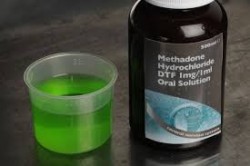It is estimated that about 9% of the population misuses opiates regularly over the course of their lifetime. Heroin and prescription pain medications such as Oxycodone are some examples of the opiates that are abused in the United States and throughout the world. These drugs can cause physical dependence, but the time it takes to become physically dependent varies with each individual. The body needs time to recover, and withdrawal symptoms can begin almost immediately as a result of the person ceasing use of the drugs.
Symptoms of Oxycodone withdrawal include
- Abdominal cramping
- Agitation
- Anxiety
- Chills
- Diarrhea
- Dilated pupils
- Increased tearing
- Insomnia
- Muscle aches
- Nausea
- Profuse Sweating
- Runny nose
- Vomiting
Opioid withdrawal reactions are reported to be very painful but not life threatening. Symptoms usually start showing up within 12-30 hours of last dosage of the opiate. Doctors can diagnose opiate withdrawal after asking questions about your medical history and drug use and then performing a physical exam. Urine or blood tests are given during these exams to screen for drugs and confirm opiate use as well as any other substances that may compound the withdrawal symptoms. Suggested treatment for detox from opiates includes supportive care and medications.
Commonly prescribed Oxycodone Detox Medications

Methadone is a commonly prescribed Oxycodone detox medication.
- Clonidine
- Buprenorphine (Subutex)
- Methadone
Drug treatment programs may advertise treatment options that include detox under anesthesia, or rapid opiate detox, for opiate withdrawal. These programs involve placing the addict under anesthesia and injecting large doses of opiate-blocking drugs, hoping to speed up the process of detox while subduing the harsh effects of withdrawal. However, very little evidence exists to prove that rapid opiate detox hastens the withdrawal. There are also concerns involved with the use of anesthesia and vomiting that occurs during withdrawal. Many professionals consider the risks of anesthetic assisted withdrawal to outweigh any prospective benefits.
Goals of Oxycodone Detox
Goals of treatment should be discussed with the patient and recommendations for care made accordingly. Methadone maintenance is strongly recommended if a person continues to withdraw repeatedly. One of the biggest complications that occurs is return to drug use. People who have just withdrawn or detoxed, account for the most opiate overdose deaths, because withdrawal reduces your tolerance to the drug. Those who have just gone through withdrawal overdose on a much smaller dose than they were used to before their detox. Following withdrawal, long-term treatment is recommended for most people. This often includes attending self-help groups, like Narcotics Anonymous or SMART Recovery, outpatient counseling, inpatient treatment, or intensive outpatient treatment (day hospitalization).
It is important to note that appropriate treatment of other possible disorders can reduce the risk of relapse. Those withdrawing from opiates should be checked for poly-drug use, depression, and other mental illnesses in an effort to treat any symptoms that are likely to occur during withdrawal. Entering society after detox is easier on the individual who has received competent care that has addressed all of the areas of the addiction, withdrawal, and lifestyle choices. This should also include managing any co-occurring illnesses or dependencies.

 Oxycodone Detox: How Professionals Can Help -
The stages of oxycodone detox work to alleviate withdrawal symptoms while also preparing the patient to attend addiction treatment.
Oxycodone Detox: How Professionals Can Help -
The stages of oxycodone detox work to alleviate withdrawal symptoms while also preparing the patient to attend addiction treatment.  Can I Go Through Oxycodone Detox at Home? -
Anyone who’s abused oxycodone for any length of time has already had a taste of how uncomfortable withdrawal effects can be. More than anything else, the fear of experiencing full-blown withdrawal prevents addicts from taking the first step towards recovery. Oxycodone belongs to the Schedule II class of prescription opiates, all of which carry a ...
Can I Go Through Oxycodone Detox at Home? -
Anyone who’s abused oxycodone for any length of time has already had a taste of how uncomfortable withdrawal effects can be. More than anything else, the fear of experiencing full-blown withdrawal prevents addicts from taking the first step towards recovery. Oxycodone belongs to the Schedule II class of prescription opiates, all of which carry a ...